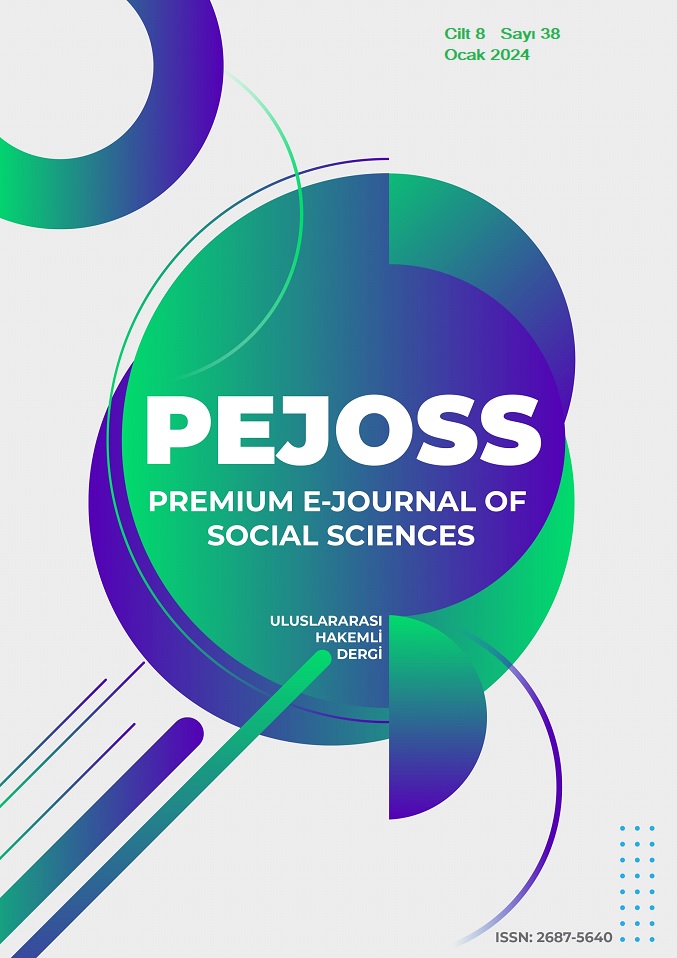Reflections of Mathematics in Nature on Clothing Design and Collection Proposal
DOI:
https://doi.org/10.5281/zenodo.10616870Keywords:
Fibonacci, Lucas, Fractal Geometry, Design, Fashion DesignAbstract
Nature was the first instructive force in the production of design by an artist. He determined the living and non-living organisms he observed in his environment as a point of inspiration. He used his inspirations visually or functionally in his works. This study, it is aimed to investigate and analyze clothing designs by addressing the methods of transferring nature to design. It is important to understand the systematic structure in nature. In this context, the aim of the study is to prepare a collection by using the mathematics of nature in garment design. It is to create new application areas in pattern and manipulation techniques by considering the mathematical rules of nature with self-similarity, self-similarity and fractal dimensions. The study was prepared as qualitative research. The framework of the collection was created with the From Biology to Design method in the Biomimesis Spiral. The research and preparation process was carried out by preparing the sub-headings in the Design from Biology method.
The collection is based on the mathematics of nature. It consists of 10 wearable designs that are compatible with today's fashion. The usability of Fibonacci Number Sequence, Lucas Number Sequence and Fractal Geometry was tested in the mold preparation and scaling of the 10 designs that make up the collection and these ratios were applied in the molds. Gradual increase and proportions were scaled on the female body. The use of these mathematical methods in pattern preparation and fabric manipulations strengthened the design structure and holistic harmony was consciously achieved. It has been observed that new and different designs and patterns can be made from one form. In the process where nature is used as a source of inspiration, the importance of its mathematical structure is emphasized and it guides the works beyond simulation.
Downloads
References
Akpa, A. M. (2017). Fungal ınspired textile design (fıted) for sustainably – cyclable– biomimicry: a case study of synthetic fiber reuse and application. Journal Of Textile Design Research and Practice. 5(1), 50–72. https://10.1080/20511787.2017.1397489
Alik, B., & Ayyıldız, S. (2016, November, 3-4). Fractals and fractal design in architecture. (Conference presentation). 13th.International Conference” Standardization, protypes and quality: a means of Balkan Countries’ Collaboration”, Brasov, Romania.
Ashworth, W. B. (2018). Scientist on the day: Edouart Lucas. https://www.lindahall.org/about/news/ scientist-of-the-day/edouard-lucas
Barabasi, A.L. & Stanley H.E. (1995). Fractal concepts in surface growth. (1st ed.). Cambridge University Press.
Biomimicry Institute. (2016). The power of the Biomimicry Design Spiral. https://biomimicry.org/ biomimicry-design-spiral/
Cengiz, Ö., Uluışık, D., & Kara, F.N. (2020). Çağdaş sanat yapıtlarında fraktal geometri etkileri üzerine bir değerlendirme. Kafkas Üniversitesi Sosyal Bilimler Enstitüsü Dergisi. Sonbahar, 26, 563-576.
Cınbarcı, A. (2016). Fraktal geometri ve evrim. Sanat ve Bilim (Aziz Sancar Deneysel Tıp Araştırma Enstitüsü),6(11), 101-108.
Dumlupınar Üniversitesi Matematik Bölümü (2014). Leonardo Fibonacci. https://matematik.dpu.edu.tr/ tr/index/sayfa/3118/leonardo-fibonacci
Einstein, L. (2008). Leonardo Da Vinci: thoughts on art and life. World Public Library Association.
Hoadley, R. (2022). The golden ratio- part 2- Fibonacci & Lucas sequences. https://www.cosmic-core.org/ free/article-57-geometry-the-golden-ratio-part-2-fibonacci-lucas-sequences/
Kamel, M. S. (2022). The fractal implementations in fashion design. Journal of Architecture, Art & Humanistic Science. 7(31). 594-610. https://10.21608/MJAF.2020.38676.1806
Karabetça, A., R. (2018). Biyomimikri destekli tasarım ölçütleri ile yenilikçi mekanlar yaratılması. The Turkish Online Journal of Design, Art and Communication (Tojdac). 8(1), 104-111.
Kazlacheva, Z. I. (2017 May, 29-31). An investigation of application of the golden ratio and Fibonacci sequence in fashion. Design and pattern making. (Conference presentation). 17th. World Textile Conference AUTEX 2017, Corfu, Greece. https://doi.10.1088/1757-899X/254/17/172013
Özcan, M. (2019). Aristoteles’in varlık görüşü. Kaygı.13,113-131.
Sardar, Z., & Abrams, I. (2020). Kaos: kelebek etkisini ve evre uzayını daha iyi anlamak için çizgi bilim. (1. Baskı). (A. Deniz, & G. Tarcan). Say Yayınları.
Downloads
Published
How to Cite
Issue
Section
License
Copyright (c) 2024 Premium e-Journal of Social Science (PEJOSS)

This work is licensed under a Creative Commons Attribution 4.0 International License.


